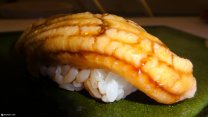Sumo Wrestling Guide Tokyo: 17 Tips & Facts
Sumo Wrestling is one of the best events to attend in Tokyo with these being the 17 Secret Tips & Facts which I carefully selected if you ever decide on visiting Japan. I missed my chance 3 times to obtain tickets due to it being sold out so prior to booking my plane ticket I reserved a sumo package.
- What: Sumo Wrestling Tournament at Kokugikan
- Why: Unique Japanese cultural experience!
- Where: Ryogoku Kokugikan Stadium in Tokyo [Map]
- When: January, May & September (lasting 15 days each)
- Hours: 12pm - 6:00pm
- Tip #1: Book your tickets ahead, it will sell out fast
- Tip #2: Read the 17 Sumo Tips listed below to prepare before your visit
- Related: Experience 10% OFF Real-life Mario Kart in Tokyo
- Accommodation: You'll find the cheapest hotels on Booking.com
- Book Now: Sumo Wrestling Tournament for just $95 USD

For those eager to experience the captivating world of Sumo Wrestling in Tokyo, securing tickets and reserving a seat is an essential first step. Dive deeper into this unique cultural spectacle by scrolling down for my comprehensive list of 17 tips and facts about sumo!
Sumo Westling Tournament Tokyo offers an enriching experience for $95. This package includes not only the tour guide and event tickets but also a translation radio to enhance your understanding of the matches. The experience is topped off with a chankonabe dinner, a traditional sumo wrestler's meal, allowing you to immerse yourself fully in the sumo culture.
Ryogoku Kokugikan sumo ring in Tokyo
Sumo wrestling tournaments in Tokyo take place in January, May, and September. Each tournament spans a 15-day period and is hosted at the Ryogoku Kokugikan in Sumida, a district in Tokyo known for its sumo heritage. This venue, steeped in history, provides the perfect backdrop for the grandeur of sumo wrestling.
One of the highlights of my experience was the unexpected opportunity to meet a sumo wrestler at the station. This encounter gives a true sense of the sheer size and presence of these athletes, offering a personal perspective on the sport's physical demands.
meeting a famous Sumo Wrestler
The history of sumo in Tokyo is as rich as the sport itself. Its growing popularity during the Meiji period led to the construction of the original Kokugikan in Ryōgoku in 1909. This venue became a cornerstone for sumo in Japan. However, during World War II, the Japanese army took over the facility, leading to some tournaments being held outdoors in a baseball stadium. This period marked a challenging yet resilient phase in sumo's history, showcasing the sport's enduring appeal and adaptability.
Understanding the historical context of sumo adds layers to the experience, making it more than just a spectator sport. It's a journey through Japanese tradition and resilience, offering insights into the cultural fabric that has shaped this unique form of wrestling. Whether you're a sumo enthusiast or a curious traveler, attending a sumo match in Tokyo is an unforgettable experience that combines sport, history, and cultural immersion.
- Hand-prints of famous Sumo wrestlers can be found at the Ryogoku train station which you can compare to your own hand.
- There are 3 annual tournaments in Tokyo, each lasting for 15 days in January, May and September, book your tickets months in advance. Sumo is known to sell out fast, so I booked my tickets first before I booked a flight or book with a travel company who will also provide a personal guide.
- Make sure to obtain a translator radio to enjoy the Sumo match in multiple languages.
- Prices usually start at $40 dollars and recently there is a special on ringside seats, for $150 dollars you get the chance to have a 400 pound sumo wrestler plant his ass on your face as he hurtles down the stage.
- Before the match starts, get yourself a nice cold beer and takoyaki balls! Seating quality is phenomenal but don't expect cup holders.
- There are many different levels in Sumo wrestling with the Yokozuna being at the top, surprisingly there are currently no Japanese Yokozuna, instead they are all Mongolian. You can recognize a Yokozuna by their thick white rope.
- Go checkout the Sumo museum during the extended break between the junior and senior sumo matches, and if you are lucky you may meet a sumo wrestler as well!
- At balcony level you'll notice the sumo match-board, the red light indicates the match winners.
- Before and during the matches you will see people with large banners walking on stages; these are names of the Sumo schools and sponsors.
- Leave before the end of the event to avoid long waiting lines at the Ryogoku train station.
- If you do decide to stay you can enjoy a Sumo bow ceremonial dance which officially ends the event.
- Go enjoy a chankonabe dinner, a Sumo staple dish, which is a rich soup with lots of assorted meats, fish and vegetables.
- Referees are called gyoji, the top-ranked Gyoji wears a dagger. Traditionally, this is suppose to represent the seriousness of the decisions they must make and their preparedness to commit seppuku if they make a mistake.
- A Sumo wrestler takes in 20,000 calories a day on average!
- Sumo wrestlers used to be skinny back in the old days.
- Traditionally, fans express their disappointment by throwing cushions at the stage.
- As you noticed in the video above; there are currently many foreigners attending Sumo making it a true international sport.












 My name is
My name is